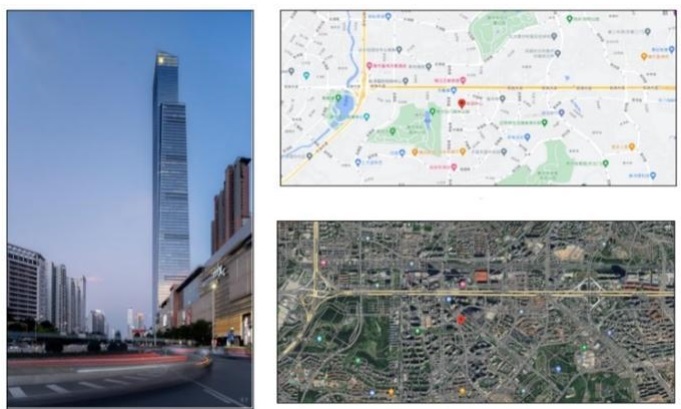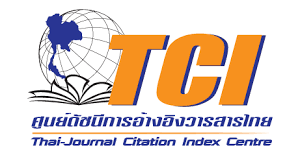Energy Efficiency Evaluation for Buildings with Solar Window Technology using BEC Codes of Thailand: Case Study of Skyscrapers in Nanning, China
doi: 10.14456/mijet.2024.10
Keywords:
Building energy codes, energy efficiency evaluation, solar window technology, solar energyAbstract
Energy efficiency and management for buildings plays a more and more important role for modern and smart city development worldwide, especially for glass buildings. The new technology of solar windows allows possibility of increasing renewable energy (RENEW) utilization while decreasing the overall total thermal transfer value (OTTV) based on most global Building Energy Codes. This research proposed an empirical study that explicitly confirmed the successive profile when utilizing solar windows for glass buildings compared to conventional glass windows. Three skyscrapers in Nanning, China (China Resources Center, Nanning Long Guang Century, and Guangxi Financial Plaza) when implementing with the hot summer and warm winter zone BEC such one of Thailand were investigated due to similarity of their annual weathers. The test results showed that the OTTV of the buildings was greatly reduced from 134.90 – 167.30 W/m2 to 29.30-40.49 W/m2, which was 3.89-4.96 times reduction. The additional renewable energy of 3,525-4,526 MWh/year was generated for solar windows compared with 0 MWh/year the standard glasses, which covering 87-92.2% of the total energy consumption for the buildings (4,058-4911 MWh/year). However, when considering in terms of investment cost, the implementation of solar windows was extremely expensive, reflected by all negative net present value (NPV) of -42 to -64 MRMB. These results revealed that replacing solar windows significantly provided high energy efficiency with additional green energy production, as well as the feasibility of using BEC of Thailand for Naning-Guangxi of China, but extremely high investment cost would still be the main challenge for further research.
References
Y. Park, “Connected Smart Buildings, a New Way to Interact with Buildings,” 2015 IEEE International Conference on Cloud Engineering, Mar. 2015, doi: 10.1109/ic2e.2015.57.
T. A. Nguyen and M. Aiello, “Energy intelligent buildings based on user activity: A survey,” Energy and Buildings, vol. 56, pp. 244–257, Jan. 2013, doi: 10.1016/j.enbuild.2012.09.005.
R. Yang and L. Wang, “Development of multi-agent system for building energy and comfort management based on occupant behaviors,” Energy and Buildings, vol. 56, pp. 1–7, Jan. 2013, doi: 10.1016/j.enbuild.2012.10.025.
B. Yan, F. Hao, and X. Meng, “When artificial intelligence meets building energy efficiency, a review focusing on zero energy building,” Artificial Intelligence Review, vol. 54, no. 3, pp. 2193–2220, Sep. 2020, doi: 10.1007/s10462-020-09902-w.
V. Villa, B. Naticchia, G. Bruno, K. Aliev, P. Piantanida, and D. Antonelli, “IoT Open-Source Architecture for the Maintenance of Building Facilities,” Applied Sciences, vol. 11, no. 12, p. 5374, Jun. 2021, doi: 10.3390/app11125374.
U. Mir, U. Abbasi, T. Mir, S. Kanwal, and S. Alamri, “Energy Management in Smart Buildings and Homes: Current Approaches, a Hypothetical Solution, and Open Issues and Challenges,” IEEE Access, vol. 9, pp. 94132–94148, 2021, doi: 10.1109/access.2021.3092304.
T. Prosing and C. Photong, “Design and Development of Transparent Luminescent Solar Concentrator using Mixed Rock Salt and Polymethyl Methacrylate,” Engineering Access, vol. 8, no. 2, pp. 198–204, Apr. 2022, doi: 10.14456/mijet.2022.26
M. S. Aliero, M. Asif, I. Ghani, M. F. Pasha, and S. R. Jeong, “Systematic Review Analysis on Smart Building: Challenges and Opportunities,” Sustainability, vol. 14, no. 5, p. 3009, Mar. 2022, doi: 10.3390/su14053009.
A. Mourtada, K. A. Hussein, A. Hamadi, Z. Nakad, and H. Ajouz, “Parametric analysis for the Development of an Energy Building Code for Lebanon: HVAC Chapter,” 2018 4th International Conference on Renewable Energies for Developing Countries (REDEC), Nov. 2018, doi: 10.1109/redec.2018.8597680.
PGB50189 – 2015: Design Standard for Energy Efficiency of Public Buildings (In Chinese), Ministry of Housing and Urban-Rural Development of the People’s Republic of China (February 2015)
GB/T 50378 – 2019: Assessment Standard for Green Building, Ministry of Housing and Urban-Rural Development of the People’s Republic of China (March 2019) (In Chinese).
Y. Matsumoto, F. Meléndez, and R. Asomoza, “Performance of p-type silicon-oxide windows in amorphous silicon solar cell,” Solar Energy Materials and Solar Cells, vol. 66, no. 1–4, pp. 163–170, Feb. 2001, doi: 10.1016/s0927-0248(00)00169-0.
Z. Li, “Infrastructure in China,” Cities of Dragons and Elephants, pp. 409–439, Oct. 2019, doi: 10.1093/oso/9780198829225.003.0013.
S. Chirarattananon, P. Chaiwiwatworakul, V. D. Hien, P. Rakkwamsuk, and K. Kubaha, “Assessment of energy savings from the revised building energy code of Thailand,” Energy, vol. 35, no. 4, pp. 1741–1753, Apr. 2010, doi: 10.1016/j.energy.2009.12.027.
K. Tseng, M.-Y. Chung, L.-H. Chen, and M.-Y. Wei, “Applying an Integrated System of Cloud Management and Wireless Sensing Network to Green Smart Environments—Green Energy Monitoring on Campus,” Sensors, vol. 22, no. 17, pp. 6521–6540, Aug. 2022, doi: 10.3390/s22176521.
L. Lagsaiar, I. Shahrour, A. Aljer, and A. Soulhi, “Modular Software Architecture for Local Smart Building Servers,” Sensors, vol. 21, no. 17, pp. 5810–5825, Aug. 2021, doi: 10.3390/s21175810.
T. Hai, J. Zhou, N. Li, S. K. Jain, S. Agrawal, and I. Dhaou, “Cloud-based bug tracking software defects analysis using deep learning,” Journal of Cloud Computing, vol. 11, no. 1, pp. 1–20, Aug. 2022, doi: 10.1186/s13677-022-00311-8.
T. Kamal, Z. Hassan, M. Saleem, M. Shakir, M. Usman, M. Bajwa, N. Shabbir, and K. Daniel, “Integrating Smart Energy Management System with Internet of Things and Cloud Computing for Efficient Demand Side Management in Smart Grids,” Energies, vol. 16, no. 12, pp. 4835–4850, Jun. 2023, doi: 10.3390/en16124835.
A. E. Akin-Ponnle, P. Capitão, R. Torres, and N. B. Carvalho, “Home Chimney Pinwheels (HCP) as Steh and Remote Monitoring for Smart Building IoT and WSN Applications,” Sensors, vol. 23, no. 5, pp. 2858–2870, Mar. 2023, doi: 10.3390/s23052858.
R. Shankar, T. J. Sakraida, and F. X. McAfee, “Smart and Connected Health Apps: A Cross-Disciplinary Effort,” Energy, vol. 35, no. 4, pp. 1741–1753, Jun. 2017, doi: 10.18260/1-2--28828.
B. Qolomany, I. Mohammed, A. Al-Fuqaha, M. Guizani, and J. Qadir, “Trust-Based Cloud Machine Learning Model Selection for Industrial IoT and Smart City Services,” IEEE Journal of Internet of Things, vol. 7, no. 5, pp. 4103–4114, Aug. 2020, doi: 10.1109/JIOT.2020.3022323.
W. Tushar, C. Yuen, K. Li, K. Wood, W. Zhang, and X. Liu, “Design of Cloud-Connected IoT System for Smart Buildings on Energy Management,” EAI Endorsed Transactions on Energy Web, vol. 3, no. 10, pp. 1–16, Jan. 2016, doi: 10.4108/eai.1-1-2016.150813.
A. Garai, I. Péntek, A. Adamkó, and A. Nemeth, “Methodology for clinical integration of e-Health sensor-based smart device technology with cloud architecture,” Acta Polytechnica Hungarica, vol. 14, no. 1, pp. 105–123, Mar. 2017, doi: 10.1556/606.2017.12.1.6.
S. Chaterji, N. D. DeLay, J. Evans, N. Mosier, B. Engel, D. Buckmaster, M. Ladisch, and R. Chandra, “Lattice: A Vision for Machine Learning, Data Engineering, and Policy Considerations for Digital Agriculture at Scale,” IEEE Open Journal of the Computer Society, vol. 2, no. 1, pp. 1–20, Jun. 2021, doi: 10.1109/OJCS.2021.3085846.
L. J. Perez and J. Salvachúa, “An Approach to Build e-Health IoT Reactive Multi-Services Based on Technologies around Cloud Computing for Elderly Care in Smart City Homes,” Applied Sciences, vol. 11, no. 11, pp. 5172–5190, Jun. 2021, doi: 10.3390/app11115172.
M. Uzair, S. Y. Al-Kafrawi, K. M. Al-Janadi, and I. A. Al-Bulushi, “A Low-Cost IoT Based Buildings Management System (BMS) Using Arduino Mega 2560 And Raspberry Pi 4 For Smart Monitoring and Automation,” International Journal of Electrical and Computer Engineering Systems, vol. 13, no. 1, pp. 35–50, Apr. 2022, doi: 10.32985/ijeces.13.3.7.
J. Bae, J.-H. Lee, A. Jang, Y. K. Ju, and M. Park, “SMART SKY EYE System for Preliminary Structural Safety Assessment of Buildings Using Unmanned Aerial Vehicles,” Sensors, vol. 22, no. 7, pp. 2762–2780, Apr. 2022, doi: 10.3390/s22072762.

Downloads
Published
How to Cite
Issue
Section
License

This work is licensed under a Creative Commons Attribution-NonCommercial-NoDerivatives 4.0 International License.








